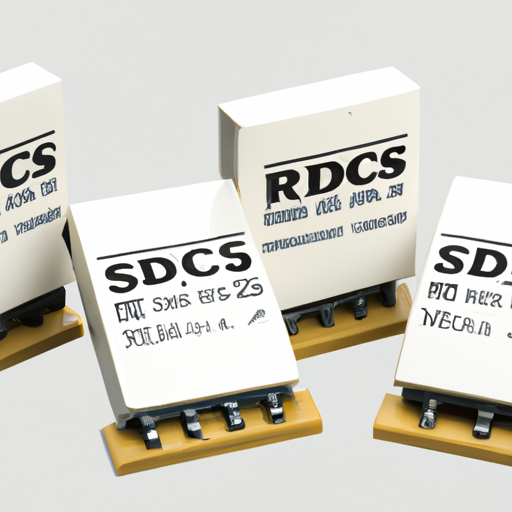Core Functional Technology of DIACs and SIDACs
1. DIAC (Diode for Alternating Current) - **Functionality**: A DIAC is a two-terminal semiconductor device that exhibits a unique characteristic of conducting current only after a specific breakover voltage is reached. It is designed to operate in AC circuits, allowing it to switch on and off symmetrically in both directions. - **Operation**: The DIAC remains in a non-conducting state until the voltage across it exceeds its breakover voltage. Once triggered, it allows current to flow until the current drops below a certain holding level, at which point it turns off. This behavior makes DIACs ideal for applications requiring phase control. - **Applications**: Common applications include: - **Light Dimmers**: Adjusting the brightness of incandescent lamps by controlling the phase angle of the AC waveform. - **Motor Speed Controls**: Regulating the speed of AC motors in fans and other devices. - **Triggering Circuits**: Serving as a trigger for TRIACs in various control applications.
2. SIDAC (Silicon Diode for Alternating Current) - **Functionality**: Similar to a DIAC, a SIDAC is a two-terminal device designed for higher power applications. It also features a breakover voltage and conducts in both directions, making it suitable for AC applications. - **Operation**: The SIDAC remains off until the applied voltage exceeds its breakover voltage, at which point it conducts until the current falls below a specified threshold. This makes it effective for handling transient conditions. - **Applications**: Key applications include: - **Overvoltage Protection**: Protecting sensitive electronic components from voltage spikes. - **Triggering SCRs**: Used in power control applications to trigger Silicon Controlled Rectifiers (SCRs) for precise control of high-power devices. - **Snubber Circuits**: Protecting switching devices from voltage transients.
Application Development Cases
1. Light Dimming Circuits - **Description**: DIACs are integral to light dimming circuits, allowing users to adjust the brightness of incandescent lamps by controlling the phase angle of the AC waveform. - **Effectiveness**: This application demonstrates energy efficiency and extends the lifespan of bulbs by reducing the average power delivered to the lamp.
2. Motor Speed Control - **Description**: In fan speed controllers, DIACs enable variable speed control of AC motors by adjusting the phase angle of the voltage supplied to the motor. - **Effectiveness**: This application enhances user comfort and energy efficiency, allowing for tailored performance based on user preferences.
3. Overvoltage Protection - **Description**: SIDACs are commonly used in surge protection devices to clamp voltage spikes, safeguarding sensitive electronic components from damage. - **Effectiveness**: By rapidly switching on during overvoltage conditions, SIDACs prevent circuit damage, ensuring the reliability and longevity of electronic devices.
4. Triggering SCRs in Power Control Applications - **Description**: SIDACs can effectively trigger SCRs in applications such as lighting control, heating elements, and motor drives. - **Effectiveness**: This application highlights the precision control SIDACs provide in high-power applications, improving overall system performance and efficiency.
5. Snubber Circuits - **Description**: Both DIACs and SIDACs can be utilized in snubber circuits to protect switching devices from voltage transients. - **Effectiveness**: By absorbing voltage spikes, these devices help maintain circuit integrity, reducing the risk of failure and enhancing overall system reliability.
Conclusion
DIACs and SIDACs are crucial components in modern electronic circuits, particularly in power control and protection applications. Their ability to handle AC signals, provide precise control, and protect against overvoltage makes them invaluable across various industries, including lighting, motor control, and consumer electronics. As technology continues to evolve, the applications for these devices are expanding, underscoring their significance in developing efficient and reliable electronic systems. Their role in enhancing energy efficiency and protecting sensitive components will remain vital as the demand for advanced electronic solutions grows.






